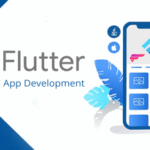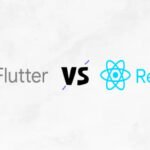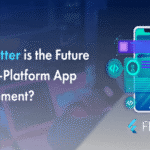Mobile AppMVP vs Full Product Launch: What Should Startups Build First?

Table of Contents
Introduction: Why This Decision Can Make or Break Your Startup
Startups often have big ideas, but limited time, money, and developer bandwidth. One of the most important decisions you’ll make early on is: Should we launch an MVP first or go straight for a full-fledged product?
Making the wrong choice could cost months of development, lost capital, and missed market timing. In fact, 42% of startups fail because they build products with no market need (CB Insights). That’s why building a Minimum Viable Product (MVP) is often the preferred starting point—especially for new or unvalidated business models.
As a mobile app development team in Chennai that works with startups at every stage, we’ve seen how the right decision here leads to faster traction, smarter scaling, and better use of investor capital.
What is an MVP?
An MVP (Minimum Viable Product) is a basic version of your app or platform with just enough features to satisfy early adopters and validate your core value proposition.
Key Characteristics of an MVP
- Includes only must-have features
- Takes less time and money to build
- Focuses on learning what users want
- Is scalable if proven successful
MVPs let you test your idea with real users and avoid wasting resources building features people don’t need.
What is a Full Product Launch?
A full product is the complete, polished version of your app or platform, typically with:
- Multiple feature sets
- Advanced UX/UI
- Integrations, automation, scalability
- Analytics, notifications, user personalization
- Marketing support and go-to-market (GTM) strategy
This version is market-ready, often suited for growth-stage startups or businesses with validated models.
Key Differences: MVP vs Full Product
Criteria | MVP | Full Product Launch |
Timeline | 2–4 months | 6–12 months |
Budget | Lower | Higher (2x–5x MVP) |
Goal | Validate idea, test core features | Enter market, scale, acquire users |
Features | Only essentials | Complete feature set |
Risk | Low financial risk | Higher financial and market risk |
Feedback Loop | Faster | Slower |
Benefits of Building an MVP First
1. Launch Faster and Save Money
MVPs reduce time-to-market drastically. With a streamlined build (2–3 months), you can start getting feedback from real users and iterate quickly. This is perfect if you’re working with limited capital or bootstrapping.
2. Validate Product-Market Fit Early
You don’t need to guess if your idea works. By launching a functional MVP, you test with real users and gather data to inform your product roadmap.
3. Attract Early Investors or Customers
A working MVP speaks louder than a pitch deck. Investors prefer startups with traction and a testable solution. MVPs are proof you can execute.
4. Learn What Users Really Want
MVP feedback often surprises founders. Features you thought were essential may be ignored, while unexpected pain points emerge. This feedback fuels smarter iteration.
Risks of Skipping MVP and Launching Fully
1. Building Features Nobody Uses
Startups that skip MVPs often end up building bloated products based on assumptions—not user needs. This leads to wasted budget and slow adoption.
2. Delayed Market Entry
A full product takes longer to launch. In fast-moving markets, this could mean losing first-mover advantage to more agile competitors.
3. Greater Burn Rate, Higher Stakes
Burning cash on features and tech infrastructure without validation can drain resources. It also increases pressure on your team and investors.
When Is a Full Product Launch the Right Choice?
While MVPs are ideal for most early-stage startups, some situations justify launching a full product:
1. You Have a Validated Business Model
If you’ve already run a pilot, closed partnerships, or tested a beta version successfully, going all-in may be worth it.
2. High Competition or Established Market
In crowded industries, users expect polished apps. A half-baked MVP may harm your brand. Here, a near-complete product is safer.
3. Compliance or Security Requirements
If your app handles sensitive data (like in fintech or healthcare), regulators may require a full, secure implementation from Day 1.
Real Startup Case Studies
Case Study 1: MVP-first Approach – Confidential Signed NDA (eLearning App)
Challenge:
A Chennai-based founder wanted to test demand for regional-language video learning.TechHeaders’ Approach:
- Built MVP in 8 weeks
- Core features: course browsing, video streaming, offline access
- Integrated basic analytics
Results:
- 20K users in 3 months
- Got funded by an edtech accelerator
- Later expanded to a full app with payment gateway, gamification, and push notifications
Case Study 2: Full Product Launch – Confidential Signed NDA (Logistics Platform)
Challenge:
Client had confirmed vendor contracts and over 50 drivers onboarded pre-launch.TechHeaders’ Solution:
- Developed complete app with order tracking, route optimization, and real-time analytics
- 5-month build with rigorous testing, GPS tracking, and user training
Results:
- 99.9% uptime
- Reduced delivery errors by 33%
- Saved $80K in manual processing costs in first 6 months
How to Choose: MVP vs Full Product – Decision Framework
Use this decision matrix:
Factor
Go MVP If…
Go Full Product If…
Budget
<$20K–$40K
>$50K+
Market Validation
Idea-stage or early-stage startup
Proven concept or business model
Timeline
Want to launch in <3 months
Can invest 6–12 months
Team Size
Small core team or solo founder
Internal dev, marketing, or sales team
Compliance
Low to medium
High (GDPR, HIPAA, PCI-DSS, etc.)
Competition
Low to medium
High; user expectations are polished
How TechHeaders Helps Startups Scale Smartly
As a mobile app development company in Chennai, we specialize in helping startups:
Build MVPs That Can Grow
We don’t just ship throwaway MVPs—we architect scalable solutions from Day 1.
Offer Advisory at Every Stage
From product-market fit to GTM strategy and investor decks, we’re more than a tech partner.
Dedicated Teams with Sprint-Based Delivery
We assign UI/UX designers, mobile devs, backend engineers, and PMs that fit your startup’s velocity and culture.
Explore our other blogs for more product-building strategies, hiring advice, and mobile development best practices.
Conclusion: Start Small, Scale Fast
For most startups, the MVP-first route is the smartest way to enter the market. You’ll move faster, spend less, validate assumptions, and gain traction. Once the idea is proven, you can iterate and expand with confidence.
But if you’ve already validated your model and have customer or investor commitments, a full product launch can give you the competitive edge you need.
If you’re wondering how to go from idea to MVP—or from MVP to full-scale product—partner with a startup-focused app development company in Chennai.
Contact us today and let’s build something that scales.
FAQs
1. What’s the ideal MVP development timeline?
Typically 6–12 weeks, depending on complexity and platforms (iOS, Android, Web).
2. Can I upgrade an MVP into a full product later?
Yes—if architected properly. That’s why choosing an experienced team is key.
3. How much does an MVP cost to build?
In India, a basic MVP costs between $8,000–$20,000 depending on features and tech stack.




